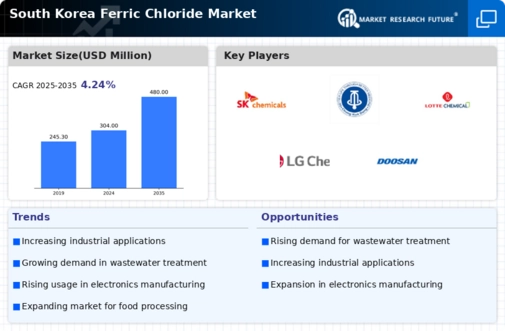The South Korea Ferric Chloride Market is characterized by a robust competitive landscape, driven by growing industrial applications such as wastewater treatment, electronics manufacturing, and chemical synthesis. The demand for ferric chloride has surged in response to ecological regulations mandating efficient wastewater treatment solutions, alongside a rising need for high-purity chemicals in various production processes. The market is marked by both established players and emerging companies, fostering innovation and competitive pricing strategies. As industries continue to evolve, the emphasis on quality, compliance, and sustainability in products has become pivotal, thus intensifying competition among key market participants.
The industry's dynamics continue to be shaped by factors such as technological advancements, geographical diversification, and the ability to meet changing customer preferences in a rapidly shifting market landscape. KPI has a strong presence in the South Korea Ferric Chloride Market owing to its focus on high-quality production and adherence to regulatory standards, which have bolstered its reputation among key industrial users. The company's strategic initiatives have centered on enhancing production efficiency and establishing long-term partnerships with manufacturers in various sectors.
KPI's strengths lie in its well-established distribution network and robust customer support, which ensure timely product availability and reliable service. The company's commitment to research and development has allowed it to innovate new formulations of ferric chloride that cater to specific industrial needs, further solidifying its competitive position in the market. SK Chemicals is a significant player in the South Korea Ferric Chloride Market, distinguished by its comprehensive portfolio of chemical products that cater to various industrial applications. The company leverages its expertise in chemical manufacturing to offer a range of ferric chloride solutions, emphasizing quality and reliability.
SK Chemicals has gained market presence through strategic investments in production facilities and continuous improvement in manufacturing processes. Its strengths include a strong emphasis on sustainability and environmental responsibility, aligning well with current market trends. Additionally, SK Chemicals has been active in pursuing mergers and acquisitions that expand its operational capabilities and product offerings, further enhancing its market presence in South Korea's competitive landscape. With a commitment to R&D, the company continually aims to enhance its product formulations, ensuring they meet the evolving demands of its customer base in the region.
















Leave a Comment